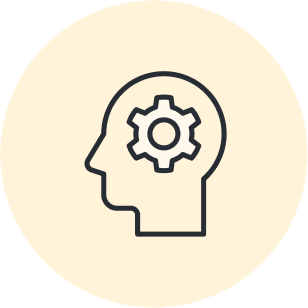Think back to jobs you’ve had in the past. You’ve probably always known exactly who your boss was, right?
That’s because many businesses take a top-down approach when it comes to organizational management. The flow of the authority starts at the top of the organization and works its way down. But what about a business that has multiple projects happening at the same time, with employees answering to several leaders? What’s the best way to visually represent who is accountable to what area of the organization, and moreover, who has decision-making power?
You might want to explore the human resources matrix as an option, an at-a-glance representation of the ongoing projects within different teams and the major participants in each project. A human resources matrix also clearly lays out the chain of command on an assignment-based level, encouraging employees to work cross-functionally to achieve goals.
Learn more about the benefits of this type of organizational chart—we’ve even included some HR matrix examples to help.

What is a human resources matrix?
A human resources matrix is beneficial for organizations with employees reporting through more than one channel or to more than one leader. It’s called a matrix because it is laid out in a grid or matrix pattern.
For example, an ad agency that employs writers, designers, and developers likely has team members working on a handful of different projects at the same time. In this instance, an organizational matrix shows at first glance who has ownership over who and which stakeholders are involved.
Take a look at this HR matrix example:

Notice how team members are organized under their functional leaders but may be assigned additional work by the manager of a specific project. Under the fluid and flexible style of a matrix, the organization can allocate resources where it needs them and make changes when priorities shift.
When you should use an HR matrix
A matrix structure is best in situations that call for daily collaboration between mid-level management and employees on different teams or when the coordination can’t be achieved through informal or organic means, like one-off impromptu meetings or quarterly syncs. By clearly defining channels of communication and accountability, the matrix structure helps push work through the pipeline unimpeded.
The matrix structure is useful for teams or groups who are accountable to two reporting heads, such as a functional team manager and a product team manager. A software developer working to create a new app is a good example of this type of relationship: The developer engages with the product team manager for their day-to-day project needs, and the head of the development department manages the employee’s career and professional development
What the HR matrix solves
The matrix approach sidesteps the silo effect that can result in a top-down approach to management because various touchpoints exist. The matrix streamlines the approval process, ensuring projects don’t get held up in a single-approver bottleneck. With this type of cross-functional management, various areas of the organization interact on a regular basis.
This matrix structure also allows individual team members to manage their own progress and growth while balancing the objectives set by their various managers. Employees have more autonomy to make decisions in real time, though they must take it upon themselves to interact with other teams to solve issues that arise to maintain that autonomy.
Potential challenges of the matrix
While the human resources matrix can provide transparency in a busy organization, it isn’t a fit for every business or situation. Successfully implementing and running a matrix structure takes extensive coordination and requires a dedicated team to ensure its continued success.
The human resources matrix could open up the potential for conflict when employees answer to more than one direct supervisor or manager. By its nature, the human resources matrix presents many opportunities for clashing opinions.
If you apply the human resources matrix to an organization, you’ll need to establish a clear process for handling conflict.
For example, if a designer and copywriter disagree on a headline or image placement, protocol should encourage team members to talk through the issue to reach a compromise, rather than escalating the issue to upper management. If the employees cannot reach a compromise, maybe an A/B test is in order. Use components or suggestions from both employees and test their work against each other. Put the appropriate analytics in place to measure which version of the piece performed best.
An HR matrix template can increase productivity and transparency across your organization. If your company is considering restructuring to adopt a human resources matrix, start small and scale up as needed.

Learn more about how HR departments use Lucid (and how Lucid can maximize the efficiency of yours, too)!
Check it outAbout Lucidchart
Lucidchart, a cloud-based intelligent diagramming application, is a core component of Lucid Software's Visual Collaboration Suite. This intuitive, cloud-based solution empowers teams to collaborate in real-time to build flowcharts, mockups, UML diagrams, customer journey maps, and more. Lucidchart propels teams forward to build the future faster. Lucid is proud to serve top businesses around the world, including customers such as Google, GE, and NBC Universal, and 99% of the Fortune 500. Lucid partners with industry leaders, including Google, Atlassian, and Microsoft. Since its founding, Lucid has received numerous awards for its products, business, and workplace culture. For more information, visit lucidchart.com.
Related articles
Aligning human resources and business strategy
Few departments have a better bird’s-eye view of the entire organization than human resources. Learn what part human resources plays in the strategic planning process and how HR professionals can align their goals with the overall company strategy.
4 steps to strategic human resource planning
Learn how to implement strategic human resource planning to find and keep the best talent.
What does HR actually do? 11 key responsibilities
Everyone knows that HR is an important department in your organization, but few employees know why. Read our in-depth description of what the HR department does (or what they should be doing) to meet the needs of employees.
4 steps to discipline an employee
When you need to take steps to discipline an employee, whether for performance or behavioral issues, we’re here to make the process as painless as possible. Learn how to plan a consistent disciplinary process.

